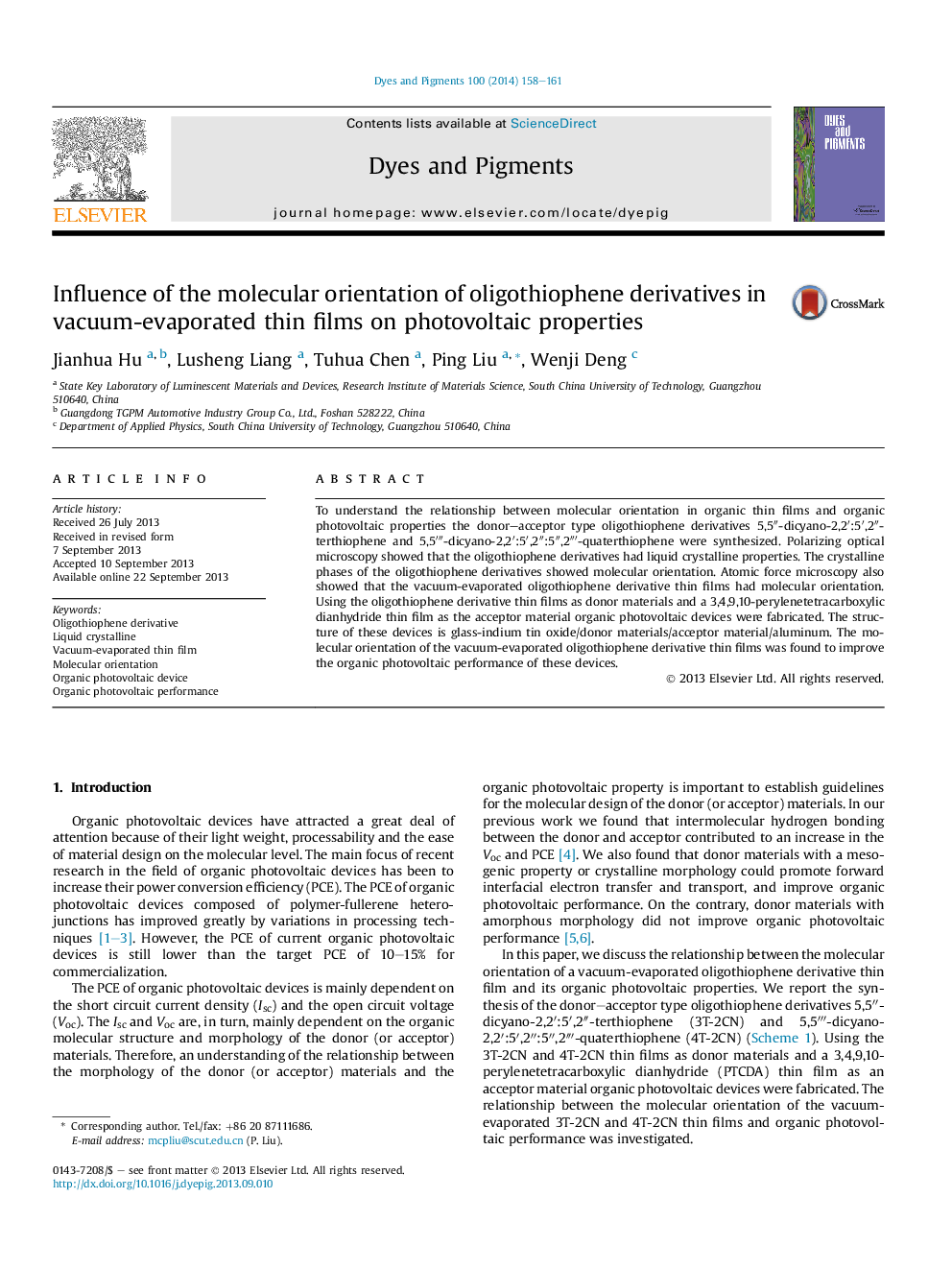| Article ID | Journal | Published Year | Pages | File Type |
|---|---|---|---|---|
| 176315 | Dyes and Pigments | 2014 | 4 Pages |
•5,5″-dicyano-2,2′:5′,2″-terthiophene and 5,5‴-dicyano-2,2′:5′,2″:5″,2‴-quarterthiophene were synthesized.•The oligothiophene derivatives had liquid crystalline properties.•The vacuum-evaporated oligothiophene derivative thin films had molecular orientation.•The molecular orientation benefits the organic photovoltaic performance.
To understand the relationship between molecular orientation in organic thin films and organic photovoltaic properties the donor–acceptor type oligothiophene derivatives 5,5″-dicyano-2,2′:5′,2″-terthiophene and 5,5‴-dicyano-2,2′:5′,2″:5″,2‴-quaterthiophene were synthesized. Polarizing optical microscopy showed that the oligothiophene derivatives had liquid crystalline properties. The crystalline phases of the oligothiophene derivatives showed molecular orientation. Atomic force microscopy also showed that the vacuum-evaporated oligothiophene derivative thin films had molecular orientation. Using the oligothiophene derivative thin films as donor materials and a 3,4,9,10-perylenetetracarboxylic dianhydride thin film as the acceptor material organic photovoltaic devices were fabricated. The structure of these devices is glass-indium tin oxide/donor materials/acceptor material/aluminum. The molecular orientation of the vacuum-evaporated oligothiophene derivative thin films was found to improve the organic photovoltaic performance of these devices.
Graphical abstractThe vacuum evaporated 3T-2CN and 4T-2CN thin films had molecular orientation. The molecular orientation benefits the organic photovoltaic performance.Figure optionsDownload full-size imageDownload as PowerPoint slide
